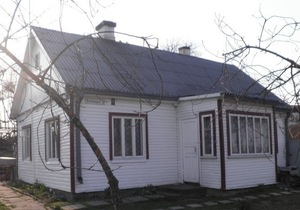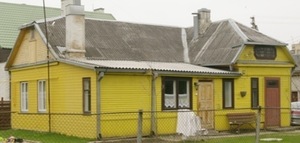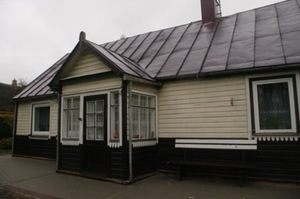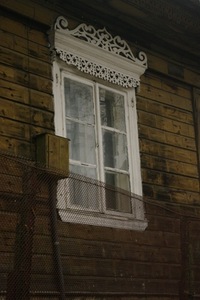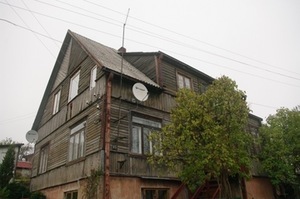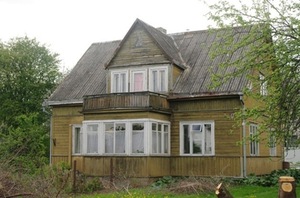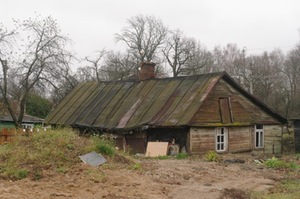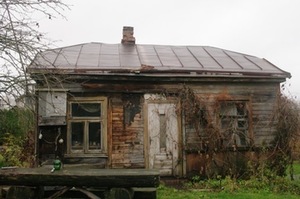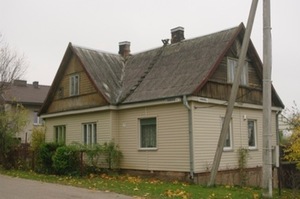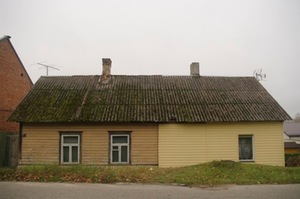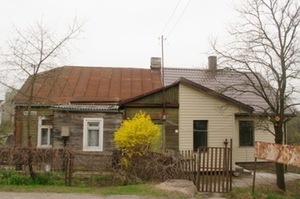Vanishing wooden Kaunas: case of Higher Šančiai in Kaunas 7
In brief: Contemporary buildings and their quarters replace traditional architecture and natural materials that were used from old times little by little. Glass, steel, concrete and plastic replaces wooden architecture in Lithuanian towns and townships. Kaunas city is not an exception from the rule. Although there are many wooden buildings that remember the beginning of the 20th century and interwar period, they vanish or are covered by plastic or concrete. The main aim and task of this article is to review the present situation of wooden architecture in the Higher Šančiai quarter of Kaunas city.
The Higher Šančiai is one of several quarters of Kaunas the history and location of which differs from other quarters of Kaunas essentially. The past of Šančiai reaches old times of our history, and the history of the territory as a quarter of the city starts much later. The place is called Šančiai from the beginning of the 19th century, in 1812. Two villages – Pašilė and Baibokai were located in the area earlier. The history of the military quarter of the Higher Šančiai started from military enforcements built by the forces of Napoleon.
As the outdoor research was carried out in the analysed territory, examples of wooden architecture of very poor and of rather good condition were detected. There are very few examples of impressive wooden architecture in the Higher Šančiai as regards the décor; still, quite a big number of wooden houses is attended to and tidied properly. Several objects date back to the end of the 19th century, beginning of the 20th century, while the biggest part of such buildings are from the interwar period.
More than 200 objects of wooden architecture remained until the present day in the Higher Šančiai, and it is hard to name the exact number of objects of wooden architecture as their “repairs” are carried out all the time, and frequently a wooden building turns into a “plastic box” or “brick fortress” as a result.
The author presents the description of several more outstanding buildings as regards the condition and maintenance of the wooden building. He mentions a wooden house at Breslaujos Str. 1, which dates back to 1900. It is almost authentic, has a tile furnace and is one of the best examples of good maintenance and preservation of wooden architecture in the quarter. Other examples of good care are located at Kaišiadorių Str. 30 and at Užšilių Str. 87.
A good example of wonderful decor of a wooden house may be found at Pušyno Str. 27. Still, the house is not maintained so well due to the lack of funds and specialists. The house was protected in the Soviet times for its wooden décor elements but presently it has no legal status of protection.
The author mentions several famous people who lived in wooden houses in the Higher Šančiai – the boxing champion A. Šocikas, who lived at Pušyno Str. 63, and the well-known conductor, composer and teacher Klemensas Griauzdė, who lived at the address Ratnyčios Str. 17.
From examples of good maintenance of wooden architecture and famous people, the author moves to sadder cases frequent in the analysed territory, entire Kaunas, Lithuania and abroad. There is really much of vanishing wooden architecture in the Higher Šančiai. Usually the sad situation is determined by the lack of funds and only then by the lack of understanding and respect of the owner to wooden architecture. Also, the natural laws affect wooden houses: there is the beginning and end for everything.
The saddest examples are of wooden houses that are maintained very badly. This happens due to the lack of knowledge, funds and skills. Such houses often have several owners, each of whom tidies up his/her part as he/she sees fit.
Thus, looking at the collected information, it may be asserted that there is some well maintained and tidied wooden architecture not only in Žaliakalnis, Panemunė, but also in the Higher Šančiai quarter in Kaunas. Of course, the examples of untidy, poorly maintained or completely unattended wooden houses prevail in the analysed territory, but their presence does not devalue the perfectly maintained wooden houses; on the contrary, such houses gain more significance in such a background.
Photos by Eglė Aleknaitė
